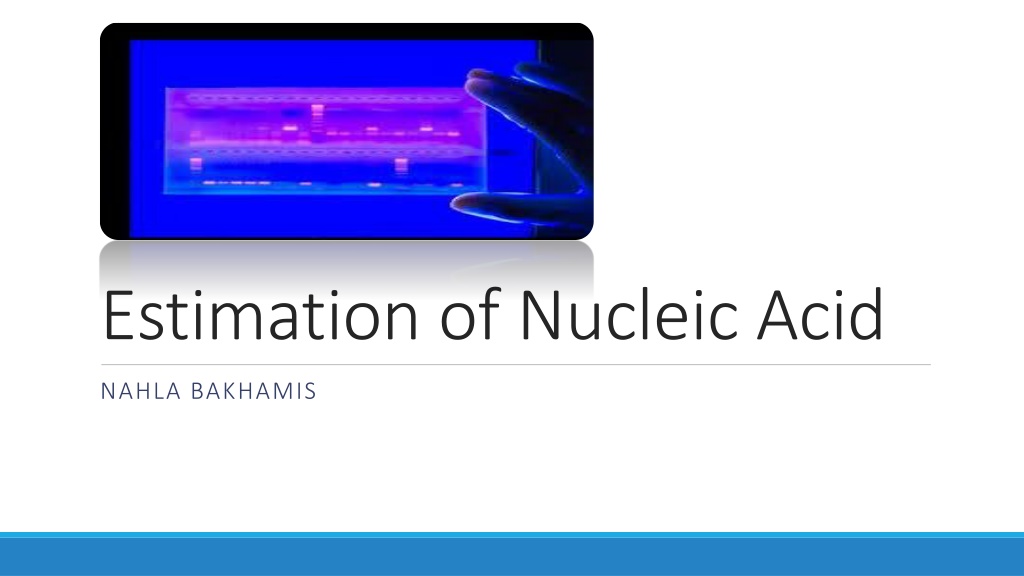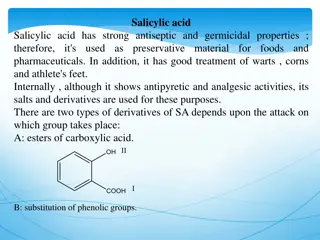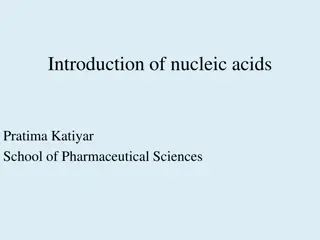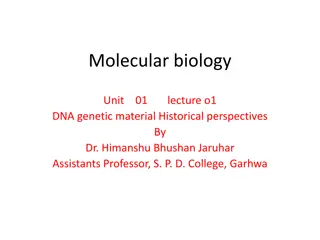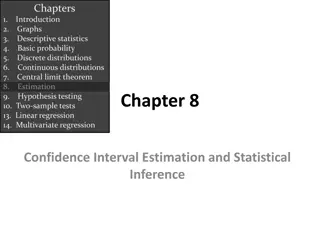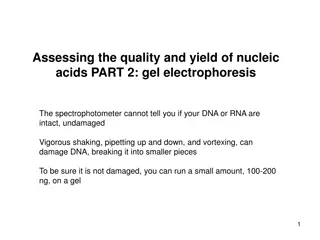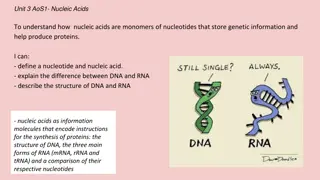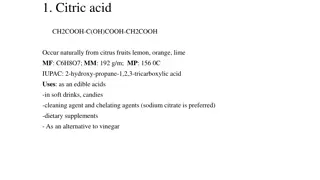Techniques for Nucleic Acid Estimation and Analysis
Learn about Agarose Gel Electrophoresis for DNA separation, Spectrophotometric method for determining DNA concentration, equipment required, buffer types, DNA markers for size identification, and applications in DNA analysis including paternity testing and crime scene investigation.
Download Presentation

Please find below an Image/Link to download the presentation.
The content on the website is provided AS IS for your information and personal use only. It may not be sold, licensed, or shared on other websites without obtaining consent from the author. Download presentation by click this link. If you encounter any issues during the download, it is possible that the publisher has removed the file from their server.
E N D
Presentation Transcript
Estimation of Nucleic Acid NAHLA BAKHAMIS
1. Agarose Gel Electrophoresis: Separation and analysing DNA of varying sizes, by moving ve charge na through an agarose mixture in electric field; To look at the DNA Quantify it Isolate particular band
Applications: DNA quantity (size) & quality (contamination). Estimation of DNA size. Analysis pf PCR products.
Equipment: Electrophoresis chamber. Power supply. Gel casting tray Sample combs to form sample wells Running buffer Loading buffer Ethidium bromide Trans illuminator
Agarose gel electrophoresis buffers: Running buffer: Depend on the size of DNA; TAE (Tris Acitate EDTA) most common TBE buffer (Tris Borate EDTA) for > 500bp Loading buffer: Bromophenol blue + sucrose + water Gives colour & density to the samples
DNA markers (DNA ladder): is a set of standards that are used to identify the approximate size of a sample run on a gel during electrophoresis. Most common markers designed by the use of restriction enzymes and a recognized DNA sequence; (Adv)Simple (dis Adv) size control PCR Good resolution for fragment size you expect.
Visualization: Transiluminator (ultraviolet box)
Analysis: Eg.1 paternity testing eg.2 Sickle cell Mother s1 s2 baby
Analysis: Eg.3 criminal crime scene S1 S2 S3
2. Spectrophotometric method To determine the concentration of DNA in a solution To determine the purity (quality) of DNA The more light absorb the higher the con DNA & RNA absorption peak 260
Sample purity: na could be contaminated by; Protein, phenol etc. These molecule has their own absorption spectra Their wavelengths is compared to 260 to ensure purity of DNA 260:280 ratio is used to assess the purity of protein
Analysis: The ratio of 260:280 provides an estimation of the purity Pure DNA ratio approximately 1.8; RNA is 2.0 Ratio < 1.8 means DNA is contaminated with protein Ration > 2.0 DNA is contaminated with RNA
